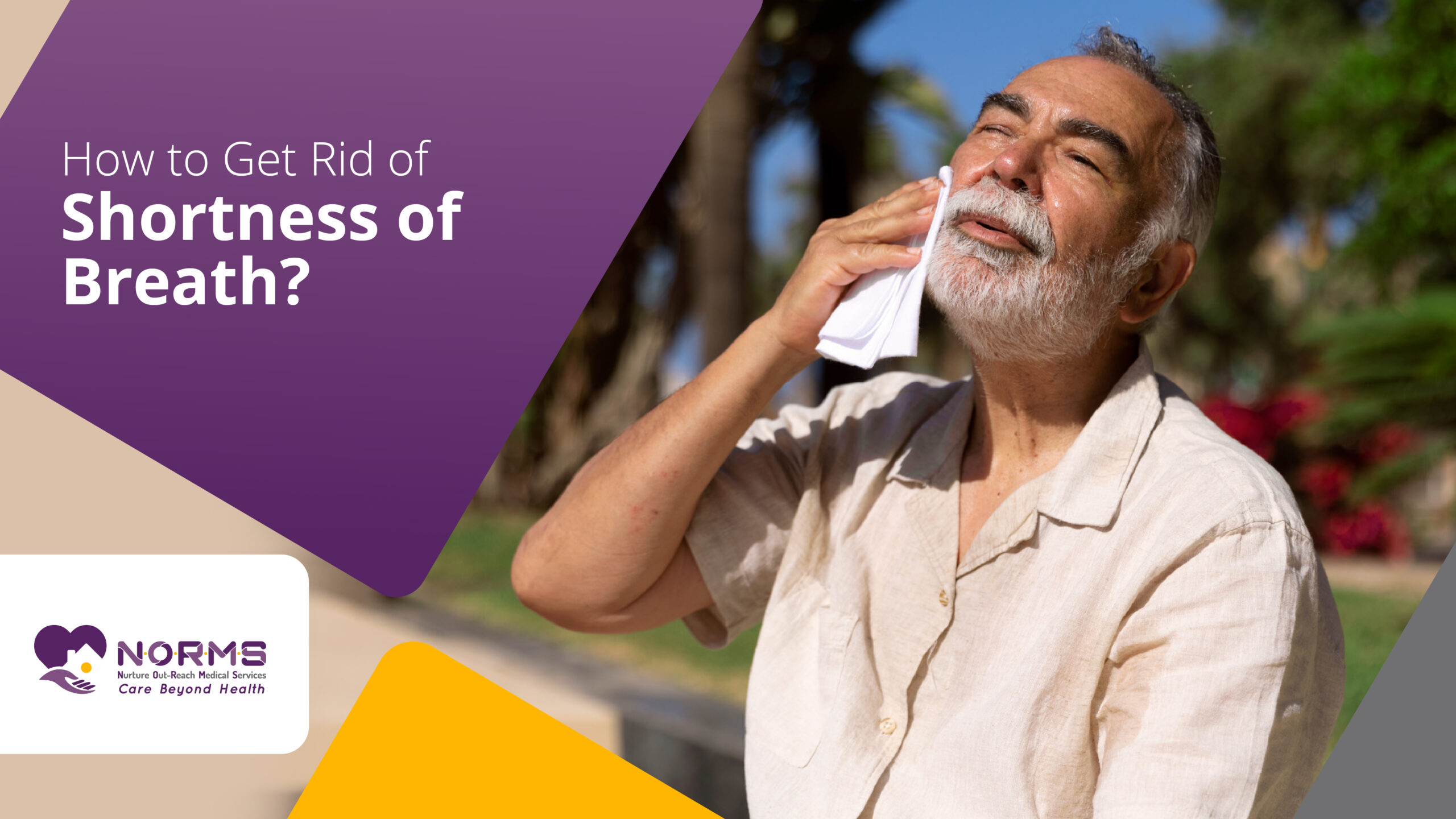
Shallowness of breath, or dyspnea in medical terminology, is a frequent and often irritating symptom. It may be mild and short-term or severe and long-standing, affecting several different kinds of life activities. Once the root causes, risk elements, and strategies of relief are all understood as a priority, then focusing on the improved standard of respiratory health becomes much simpler.
Shortness of breath may occur due to several causes. Breathing disease, like asthma, COPD, or infections, may represent a risk for the different severity of impairment of airflow. Under such heart pathologies like heart failure or coronary artery disease the blood flow may turn out to be insufficient and it will poorly fulfil the function of delivering oxygen throughout the body. Panic and anxiety, too, may be to blame. These, underlying health problems, and lastly even breathlessness.
People who often may not be able to stand or lie down for too long without struggling to breathe.
They are likely to deal with the issue of breathlessness even if they engage in moderate physical activities. Individuals that have asthma, COPD, and other lung ailments have their health more at risk. Individuals with heart disease, obesity, sedentary lifestyles and those who smoked previously are sometimes at high risk for experiencing shortness of breath.
Addressing these concerns is paramount as they significantly impact the livability of cities and negatively influence the quality of life of residents.
Engaging in deep breathing at slow pace allows lung capacity to expand to its utmost and is frequently beneficial in oxygen exchange. Engage in diaphragmatic breathing exercising that is more effective and relieves breathlessness.
Sufficient keeping of hydration leads to thin, and clear mucus in the respiratory system. Hydration in properly full concentrations also keeps the respiratory system healthy and prevents the discomfort from appearance.
Having too little weight on the respiratory system is a kind of strain that leads to respiratory difficulties within the airway. Switching over to healthy living with good food and exercise programs regularly can be beneficial in managing weights and relieving shortage of breath.
Regular moderate exercise that is done on a daily basis helps to develop the supportive muscle of the respiratory system and improve overall lung function. The everyday things, such as walking, swimming, or cycling, are really good for the heart and help us to reduce our breathing difficulties.
Humidifiers increase moisture in the air, which in turn stops the air from becoming dry and thus exacerbating the condition of the respiratory tract. On the contrary, it will help more in dry climates, as it will give relief and make breathing easier.
Steaming is a good treatment to open the airways and soothe breathlessness. Drop some eucalyptus oil into heated water and inhale the steam for respiratory soothe.
For proper posture, one can have the best respiratory capacity. Sitting or standing up helps our lungs to fill up fully and reduce the feeling of breathlessness.
Aiming at knowing and avoiding the environmental triggers that can be found in smoke, allergens, or pollution is a must. Trigger-avoiding can be a tool for relief of symptoms and asthma severity.
For patients with respiratory conditions that are already there, it is of critical importance for them to stick to their prescription medication. Medication management that is apt helps to combat the symptoms and minimises the number and severity of episodes of breathlessness.
Stress and anxiety can be an accompanying factor that leads to shortness of breath. One can try using relaxation techniques like meditation, mindfulness, or deep breathing exercises for calming down the mind and fighting the state of breathlessness.
Adequate diet that is rich in nutrition is an important factor for the entire body, including the respiratory system. Add food like fruits, vegetables that are rich in antioxidants, vitamins, and minerals that will improve lung health and reduce the risk of feeling breathless.
Acquiring these breathing methods, including pursed lip breathing and paced breathing, can enhance respiratory adaptability. These methods are aimed at better oxygen exchange and lessen the uncomfortable feelings of shortness of breath.
The key to pacing oneself is to avoid overexerting, which helps in avoiding breathlessness. Organise activities with rest periods and learn to listen to your body. This will help you prevent fatigue and further respiratory problems.
If you always feel you are out of breath, or the condition is getting worse, seek medical advice to have a proper diagnosis and treatment. Professional guidance is critical in not only addressing the root cause of the problem, but also in making sure symptoms get controlled well.
Actually, monitoring symptoms and jotting down triggers is a good way to find out about how their respiratory system works. Through such an approach, support is given in advance and then it stands as an opportunity for effective intervention, which in turn minimises the effects of breathlessness on everyday life.
Through comprehension of the factors leading to difficult respiration, people can master these flexibility in order to have control over the state of their breathing system. People are bound to be the beneficiaries of ongoing efforts toward lifestyle makeover along with proper medicinal regimen which will make them a better place to lead a more comfortable and an active life with no signs of breathlessness.
This would suggest that constant or severe breathing problems can be an indicator of serious health conditions. Going to a medical doctor to receive an assessment and the correct diagnosis along with the fitting treatment is therefore extremely important.
Inhaling the fresh air is helping to expand the lungs during running, cycling or walking at a fast speed. Seek the advice of a healthcare professional for personalised workout plans.
In the event of learning that one is having very harsh shortness of breath, especially which is co-experiencing other alarming feelings like chest pain, one has to seek immediate medical help.